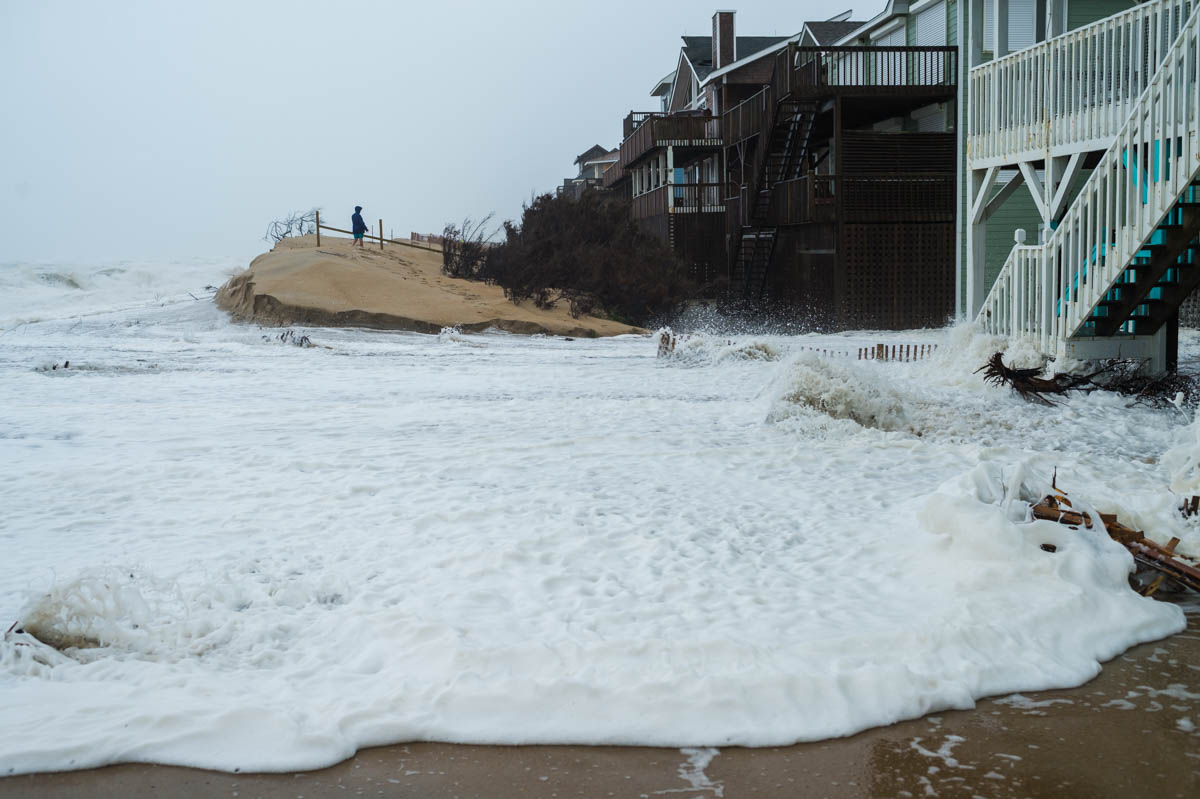“We may be bruised, but we are not broken.”
These words were posted on Facebook by staff at R.E. Mayo Seafood shortly after Hurricane Florence pounded coastal North Carolina. Owned by Birdie and Carroll Potter, the business is located on the Intracoastal Waterway in Hobucken, N.C., and has long been known as the hub for locally caught fish, crabs, scallops and shrimp.
A bit further down the coast in Oriental, Endurance Seafood took a devastating hit, putting the company out of business.
“We are wiped out. No dock, no cooler, no freezer, no ice - Florence took it all. This storm was bad, it actually beat my walk-in cooler and freezer into pieces,” said owner Keith Bruno. Despite the destruction, he is optimistic.
“The important part is we are all safe,” said Bruno. “The rest — not so good.”
"You've got to move forward, you've got to keep going... because that's what we do. We every once in a while have to pay a price to live so close to beauty. There is no doubt we’ll be back and stronger than ever. We will live up to our name and then some.”
Pamlico County fishermen were hit the hardest, according to Glenn Skinner, executive director of the North Carolina Fisheries Association.
“Some fish packing operations in Oriental and Vandemere were completely destroyed. It’s going to be a real hard winter for the industry,” said Skinner.
“We are kind of like farmers, we have a fall crop,” he explained. “The fall fisheries are big. We use that money and put it away for the winter time. The fisheries are going to be gone after this strong blow for several days. It will be next spring before we can make that up.”
Jerry Schill, government affairs liaison for NCFA, says these types of storms have a big impact on the mental health of fishermen and other working class North Carolinians.
“If these guys don’t catch anything, they get nothing. It doesn’t matter how hard they work. That’s a lot of stress on a family,” said Schill.
Traveling south further down the coast is Blackburn Brothers, a seafood distributor in Carolina Beach. It took more than a week after the storm hit for the company to unload its first truckload of product. The question now is how will Hurricane Florence impact the local seafood economy?
“No doubt this will hurt us for a few months,” said Joe Romano, co-owner of Seaview Crab Co., located in hard hit Wilmington. “We lost about $30,000 in product when the power went out. Now that the storm’s passed, many of our local fishermen have been displaced and are dealing with massive damage.”
Romano remains hopeful.
“We may not make a profit for a while, but we’re going to keep everybody busy,” said Romano.
These stories are being repeated throughout the state’s commercial fishing communities — facilities destroyed, gear lost, boats damaged and families displaced.
The fortunate are busy assessing damages and hoping to get on the water again.
Officials of the North Carolina Fisheries Association are also assessing the destruction with an eye toward the future.
“We haven’t had enough time to complete a full assessment of damages to the industry, but we do know that the areas hit were hit hard, especially our fish houses,” said Skinner. “The effects of this will take months, if not years to fully recover from. The damages will include loss of gear, boats, fish houses, loss of income and the loss of our harvest resources.”
The association is gathering information on damages sustained by the industry tabulating the potential losses from a future income standpoint including damage done to fish houses, boats, lost gear, etc. Also included in the assessment figure will be damages done to homes, vehicles, or anything connected to commercial fishing.
According to Skinner, the NCFA will be contacting federal and state officials with the numbers in order to get assistance for commercial fishing families throughout the state.
While the cost to the industry from Hurricane Florence remains to be seen, the sale of oysters, clams,and other shellfish is off limits for the time being, according to Patricia Smith of the North Carolina Division of Marine Fisheries.
“Fisheries were impacted by loss of power, which translated to a loss of product, given the inability to produce ice and keep things cool. Infrastructure damage, including docks, fish houses and vessels have also been reported,” said Smith.
Though the DMF has not yet conducted bacterial testing of coastal waters — because its equipment is offline and damaged — Smith said the division does not anticipate opening shellfish harvesting back up any time soon.
“They are filter feeders, they take into their bodies whatever is into the water,” she said. “If there’s sanitary sewer malfunctions, whatever is going into the water is what these guys are taking into themselves.”
Since the storm hit, the North Carolina DMF has not yet announced a closure of finfish or crustacean harvesting. Smith said it’s unlikely.
“Finfish are more mobile,” said Smith. “If there’s something they don’t like in the water, they’ll just move.”
Meanwhile, North Carolina’s fishing families aren’t waiting for government agencies to help. Up and down the coast, recovery is underway as fishermen repair boats and gear in anticipation of salvaging what’s left of a much needed fall fishery.







